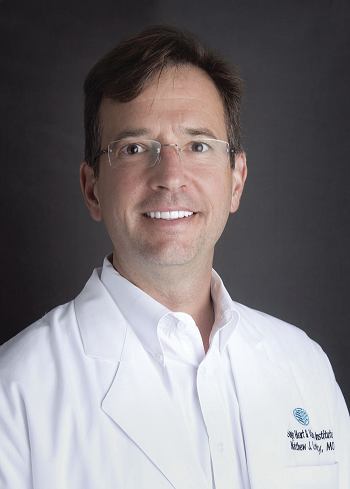Cardiac Arrest: What To Know

Matthew Levinsky, MD, is a electrophysiologist at Atrium Health’s Sanger Heart & Vascular Institute in Stanly.
Chances are, we all know someone affected by heart disease. About 63,000 Americans die from heart disease each year – that’s one in every four deaths. Of those deaths, sudden cardiac arrest (SCA) is responsible for more than 300,000 each year. SCA is unpredictable and is triggered by an electrical malfunction in the heart that causes an irregular heartbeat (arrhythmia). With its pumping action disrupted, the heart cannot pump blood to its vital organs.
Heart disease: Know the difference
Despite popular belief that a heart attack and cardiac arrest are one and the same, it is important to recognize that these two conditions are very different. A heart attack is largely the death of heart muscle. It is a circulation problem that occurs when blood flow to the heart is blocked. If the blocked artery is not reopened quickly, the tissue normally sustained by that artery becomes starved for oxygen and begins to die. Symptoms start slowly and persist for up to several weeks before a heart attack occurs. The longer a person goes without treatment, the greater the damage.
While a person suffering a heart attack may remain conscious, a person suffering from SCA almost immediately becomes unresponsive with no pulse. Death can occur within minutes if the victim does not receive treatment. Any bystander should call 9-1-1 as soon as possible if they see someone go into cardiac arrest. If an automated external defibrillator (AED) is available, they should use it and begin CPR until emergency medical services arrive.
What is an AED?
An automated external defibrillator is a battery-operated, portable device that checks the heart rhythm and delivers an electric shock through the chest to the heart to try to restore a normal rhythm. To use, a person must simply attach the electrodes to the chest of the person experiencing SCA. From there, turn on the AED’s power and follow the step-by-step instructions. These devices are most commonly found in places with large numbers of people, including shopping malls, business offices, airports, hotels, schools and many other places. A personal AED can also be easily purchased for at-home use.
Living life after SCA
While ninety-five percent of people who experience SCA die from it, life goes on for the remaining five percent who survive. A lot of the long-term effects are psychological, with many survivors experiencing varying levels of denial. While this is perfectly normal, it is important that SCA survivors learn about cardiac arrest to help them accept it and recover. In the weeks following cardiac arrest, those affected can expect changes in ways of thinking about themselves and life in addition to changes in their health and behavior. It is important that survivors implement secondary prevention habits. Regular exercise, treating sleep apnea, diet and lowering blood pressure are several of the many reverse risk factors that help to maintain optimal levels of health. Despite all of these challenges, SCA survivors can often return to normal life not long after the event. But if the emotional and mental challenges persist, talk to your physician to receive a personalized treatment plan to help you maintain your health and cope with the aftermath of your SCA experience.
A healthy heart lets you stay focused on doing what you love. Learn how Sanger Heart & Vascular Institute can help you keep your heart healthy.
Story Credit: http://www.thesnaponline.com/opinion/cardiac-arrest-what-to-know/article_893f778c-18ea-11e8-a076-8f7323b356d1.html


